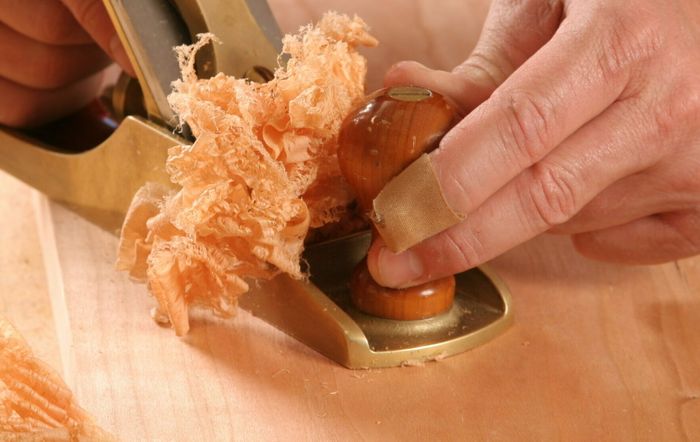Step-by-Step Guide to Tuning Your Block Plane
Whether your block plane is new or vintage, follow these steps to get it running at full capacity.

Synopsis: Whether your block plane is new or vintage, follow these steps to get it running at full capacity. Make sure the sole is flat, straighten the shoe, tune up the cap iron, check the bed, ease the edges, hone the blade, and adjust the shoe and blade.
The humble block plane, though often overlooked, is an extremely versatile tool, and I definitely wouldn’t want to work without one. If you would like to get your brand-new or decades-old block plane tuned and running at full capacity, here is a series of steps that will help.

The first thing to do is check the flatness of the sole. I do this with a quality straightedge, like the steel rule of a Starrett combination square. With the plane’s cap iron and blade in place (but with the blade retracted) hold the plane up to a light source and put the straightedge along the sole, looking for gaps between the sole and straightedge. Start with the straightedge running parallel to the plane’s length, at about the center of the sole. Then check for flatness at both edges of the sole, and check the diagonals. Any gaps, visible as slivers of light, indicate low spots. I use a black marker to identify these.
I flatten plane soles using 320-grit PSA sandpaper stuck to a known flat surface, such as the cast iron top of my tablesaw or a piece of float glass. When flattening the sole, again be sure to have the blade and cap iron installed (to introduce any stress put on the block plane when in use), but retract the blade so that it does not project beyond the sole. Sanding will work fine for minor flatness issues; but if the sole of a new block plane is significantly out of flat, I’d return it to the manufacturer.
Next I check the plane’s other critical machined surface, the angled bed where the blade rests. I use a straightedge again to assess flatness.
Because of the confined nature of the bed, it can be extremely difficult to do any major reshaping of it with sandpaper or files, so I’d recommend returning a new plane if the bed is significantly out of flat. But assuming the bed is flat, I’d use a small diamond hone to remove any burrs created during machining.
The next task is cleaning up the leading edge of the plane’s mouth. Any nicks or burrs on the edge of the mouth could catch shavings as they pass through, so make sure this surface is flat and smooth. I do this by removing the adjustable shoe at the front of the sole and working its back edge on sandpaper adhered to a flat surface. If your block plane doesn’t have an adjustable mouth (and thus no removable shoe), use a fine file to clean up the mouth’s leading edge.
It’s important that the cap iron makes complete contact with the blade, so flatten the contact area beneath the front edge of the cap iron. Again you can use sandpaper on a flat surface.

From Fine Woodworking #289
To view the entire article, please click the View PDF button below.
Restoring a block plane
Tool Test: Block Planes
Taming Tough Grain with a Bevel-Up Plane
Fine Woodworking Recommended Products

Veritas Wheel Marking Gauge

Marking knife: Hock Double-Bevel Violin Knife, 3/4 in.

Tite-Mark Marking Gauge









Log in or create an account to post a comment.
Sign up Log in